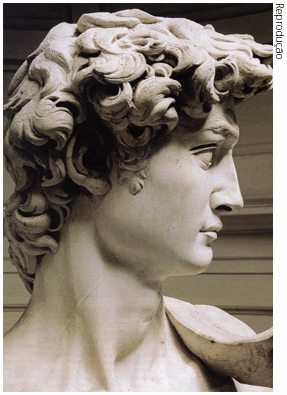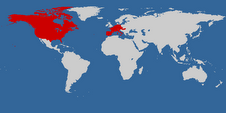 "Nanban" (南蛮 "southern barbarian") is a Japanese word which originally designated people from South Asia and South-East Asia. It followed a Chinese usage in which surrounding "barbarian" people in the four directions had each their own designation.
"Nanban" (南蛮 "southern barbarian") is a Japanese word which originally designated people from South Asia and South-East Asia. It followed a Chinese usage in which surrounding "barbarian" people in the four directions had each their own designation.In Japan, the word took on a new meaning when it came to designate Europeans, the first of who started to arrive in Japan in 1543, first at Tanegashima from Portugal, then Spain, and later the Netherlands, although the Dutch were more commonly known as "kōmō" ("red-haired"), and England. The near-total exclusion of Europeans from the archipelago occurred in 1650, when the "Sakoku" Seclusion Laws were promulgated.
The word "Nanban" was thought naturally appropriate for the new visitors, since they came in by ship from the South, and their manners were considered quite unsophisticated by the Japanese.
"Folding screen depicting the arrival in Japan of Nanban"
(Gold on paper, a pair of six panel folding screens)
"Many folding screens on the theme of the manners and customs of the Portuguese who came to Japan by ship were produced from the Momoyama period through to the Edo era. Today such screens are generally called "Nanban screens" (in Portuguese, "biombos Nanban").
The production of approximately 70 screens has been confirmed to date, and they are generally classified into one of three categories. The first category, which accounts for approximately half their number, depicts in the left-hand screen a scene of a Nanban ship anchored at port with goods being unloaded from the ship, while depicted in the right-hand screen are a Christian church and Christian priests, opposite which there is a procession made up of the ship's captain (who also served as the governor of Macao) and others as well as Japanese onlookers who are watching these people with curiosity. In the second category, the scenes depicted in both screens belonging to this first category are contained in the right-hand screen, while the left-hand screen depicts a foreign port from which Nanban ships are departing. In the third category, scenes depicted in the second category are depicted in the right-hand screen, while the left-hand screen is composed of a scene depicting a building in a foreign country with Nanban people on a terrace.
The screen held in the museum's collection belongs to the first category, although its depiction of two Nanban ships arriving in port is extremely rare. Although the artist who painted this screen also remains unknown, judging from elements such as the stability of composition, sophisticated brushwork and high quality paints, it is thought that it was painted by a highly accomplished painter who had considerable training in Chinese painting. Recently, it has also been suggested that it was painted by Togaku, a disciple of Hasegawa Tohaku.

One point of interest when viewing Nanban screens is the glimpses it affords of the understanding that the Japanese at that time had of the West. The image of Westerners with their tall stature and large noses has carried through to the present day. The previously mentioned terms of "foreign ports" and "foreign buildings" in place of the use of "West" and "Western" is probably due to the inclusion of Chinese elements in the portrayal of Nanban manners and customs and architecture. It is interesting to note that the reason why the Nanban screens mentioned above became popular is thought to be because they were regarded as symbols that brought good fortune (engimono).
Even after Japan's period of isolation had put an end to Nanban trade, while the production of Nanban screens did decrease the fact that they did not disappear altogether is most probably attributable to the perception that they were good luck symbols and not because of any relation between their subject matter and Christianity."
Jun'ichi Okubo
National Museum of Japanese History
The Portuguese Museum of Ancient Arts – Museu Nacional de Arte Antiga, Lisboa – owns two of these Nanban folding screens in its wonderful, vast collection.





















14 comentários:
Ric, forgive me for this completely off-topic comment! I, temporarily do not have use of my email. I wanted you to know that:Michael Marks claims to have written the soldier's Christmas poem. His site address:
http://grunt.space.swri.edu/mmsolchr.htm
Forgive me, my battery is low. I will have to come back to read the posts I have missed. I truly miss reading your blog.
Hello dear Gray! All's okay as long as you are okay! Are you feeling better? Not yet at home?
Thank you very much for that piece of information on the poem. I will check that for sure!
I wish you all the best, dear Gray! You can comment whenever it pleases you. I always check the whole week for new comments. Many blogger friends have already figured that out...
Get your health back soon!
Have a peaceful week!
Same from me to you Gray. Get well, and get back home!
To Ric: I did not know this history (and I devour history).
You mean, Will, the arrival of the Portuguese in Japan? Well, if there's still a Christian community around Tanegashima and Hiroshima nowadays, for better or for worse they owe it to the Portuguese...
Or do you mean the Nanban art of the folding screens? It's absolutely beautiful! True jewels!
I fed you cat for you. She was starving -- you probably had not fed her in over an hour ;-D
Mais uma lição de história, porventura menos conhecida, e por isso mais interessante.
O que uma tela nos diz...
Have you been drinking, Will? (Lol!)
I fed her four times a day! That's more than enough!
Why didn't you answer my questions?...
Obrigado, João! Se houver quem aproveite do que me dá gozo fazer, tanto melhor!
Quando os barbudos do sul chegaram ao Japão, já aquela gente sabia há muito o que era o requinte. Mas nós, com o proselitismo da treta, estragámos o que poderia ter sido uma outra forma - bem mais suave - de globalização... Raios partam!
Um bom dia para ti!
Very interesting.(as usual)
I love coming here and learn new stuff, without even studying. lol
I hope we won't get any homewrok for the Holidays.
Ah, eu já li algo sobre os portugueses chegando no Japão!
E que gravuras lindas essas que vc arrumou!!!
E vou ficar esperando o meu e-mail!
Beijão!
Hello Joel! Isn't it great to learn new stuff in an unconventional way? I just love it!
As to homework, I believe each one is free to choose whatever subject he likes. You, for instance, should go through your photography knowledge... Isn't that what you said yourself?
Olá Ricardinho! Ainda bem que gostaste! Obrigado!
Quanto ao teu e-mail, está quase pronto. Talvez o recebas ainda hoje...
Beijão!
My friend, Mr. Encyclopedia!
How I love the history of the Portuguese - passionate exploring comes naturally in that small part of the world.
Please, feel free to continue to amaze me.
Hello Gray! Thank you so very much for your very kind words!
The truth is - and you know that, of course - internet enhances a lot the little I know. I may have some ideas, but posts are made of words...
I don't intend to amaze you. It pleases me that you like it here every now and then.
Wish you the best, dear friend! :-)
Enviar um comentário